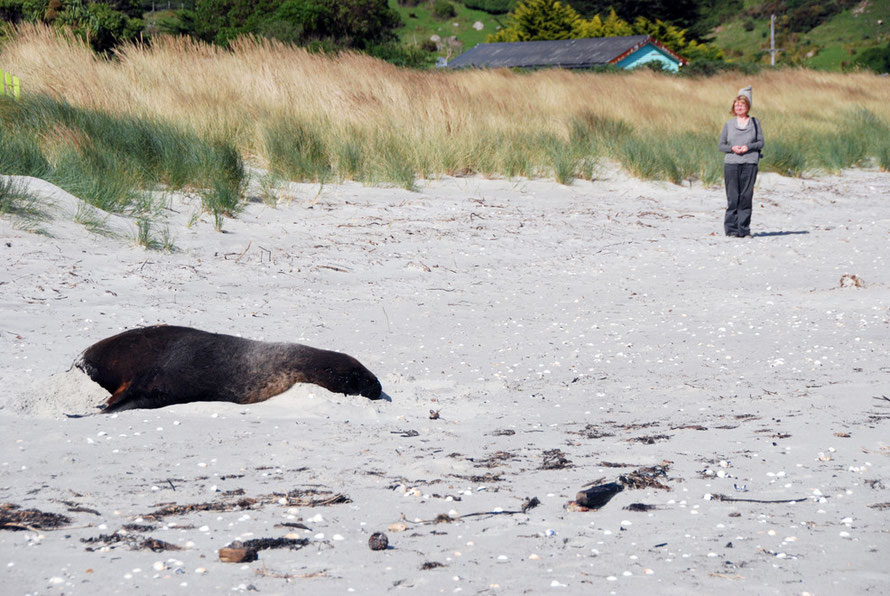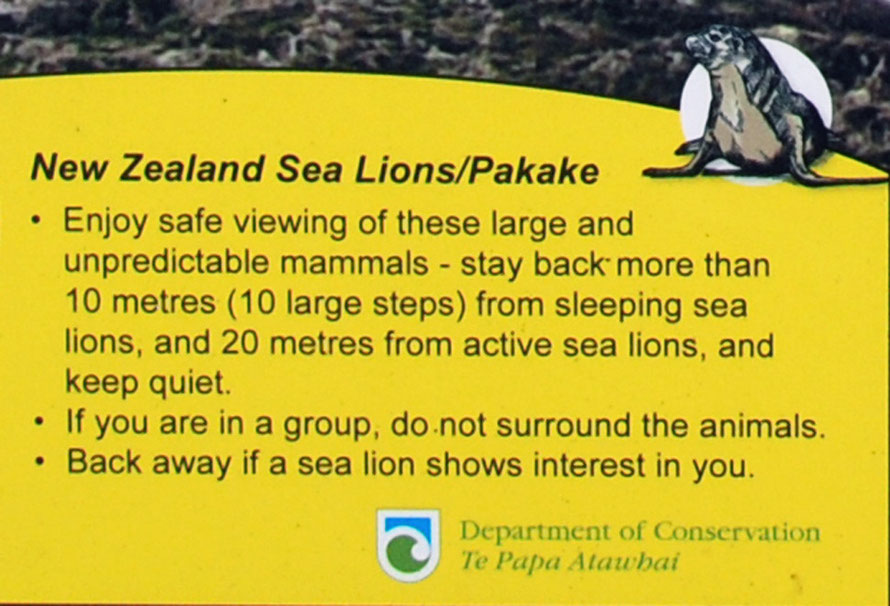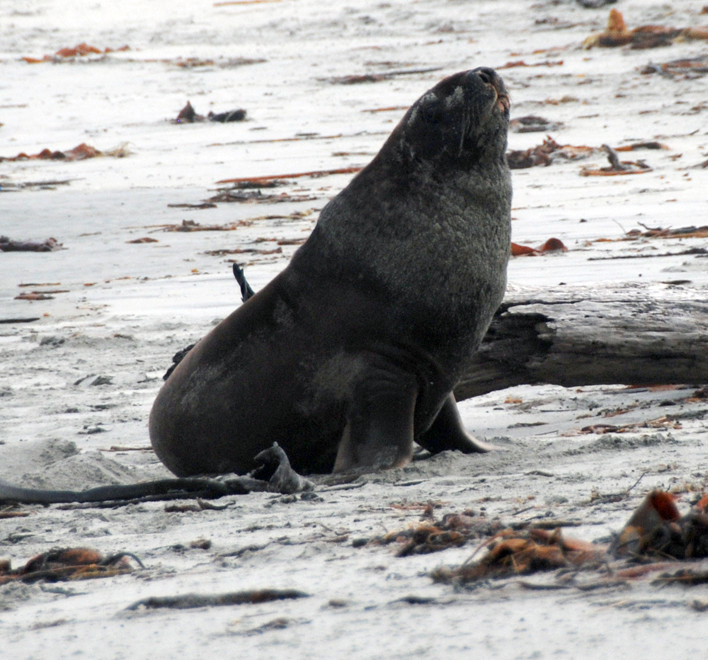IV. New Zealand (Hooker's) Sea Lions/Pakake

The New Zealand Sea Lion/pakake (Phocarctos hookeri) is the rarest of the world's six species of sea lion with a breeding population of less than 10,000. The Japanese Sea Lion was fished to extinction. The last one was seen in 1974.
Sea lions and fur seals are both part of the Otariidae family which groups together eared seals. The differences between fur seals and sea lions are not great: sea lions do not have underfur and are considerably bigger than fur seals.

Nearly all NZ sea lions breed on three of the Auckland Islands (Dundas, Enderby and Figure of Eight). The animals were protected by law in the late 1880s.
Sea lion breeding resumed on Otago Peninsula in 1993 when a lone female pupped. Since then 32 pups have been born. The daughter, grand daughters and great-grand daughters of the original female now breed there.
The breeding site is at the southern end of Victory Beach where females with pups will often move well inland using the sand dunes, low lying vegetation and forest for shelter.

Pups are born on a beach and later moved inland by their mothers who forage as far as 175km away for food. The females form a breeding group for protection and the pups huddle together for warmth.
Sea lions in their limited breeding areas are highly susceptible to introduced bacterial diseases and large losses of pups and breeding females have occurred in the last three decades on the Auckland Isles. Current population trends suggest this main breeding site could be functionally extinct by 2035.

Sea lions are also caught as a bycatch in the Auckland Island squid fishery and even though Sea Lion Escape Devices are fitted to nets there is concern that entanglement with these, whilst not as immediately catastrophic as drowning, can seriously injure sea lions.
We had a cup of tea with our neighbours on the Otago Peninsula. The subject of sea lions arose. We were warned that the bulls can out run a human, unlikely as this may seem.
Instead of running we were advised to stand together and 'look big'. With the words 'Stand your ground and do not run' ringing in our ears we approached Sandfly Beach.
There was some dispute between me and 'The Principal' on the exact measurement of 10 metres.

The dangers involved in approaching sea lions brought back memories about baboon warnings in South Africa. One park ranger advised us to clap our hands loudly if approached by mountain baboons - this was away from the Cape. Nearer the Cape we were told that if baboons grabbed our bags or cameras we should let them get on with it. They have big teeth - as you can see here.
Bull sea lions are monsters compared to females - 320/450kg versus 90/165kg - and are highly aggressive when protecting their beach mating areas and harems. This occurs from late November.
Sea lions mainly eat squid but there are known to take larger prey. Beach roost-returning penguins are at risk and will not run into their home beaches if they can see the bulk of a sea lion on the sand. Visitors to penguin beaches are advised to keep a low profile so as not to be mistaken for waiting sea lions.
They are also advised to walk and not waddle as they could be mistaken for very large penguins.
Sea lions dive to amazing depths to secure their food. Resting on the beaches is not just for fun but it allows them to replenish the oxygen levels in their blood and build up layers of insulating blubber.





